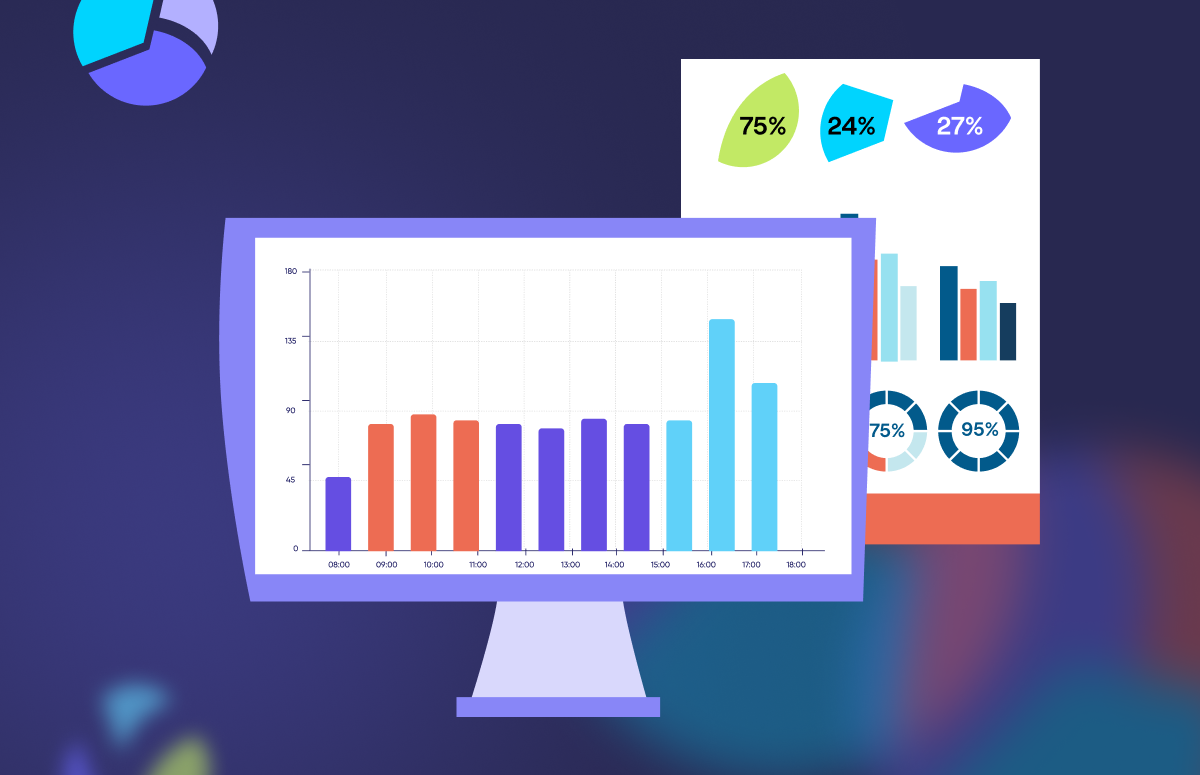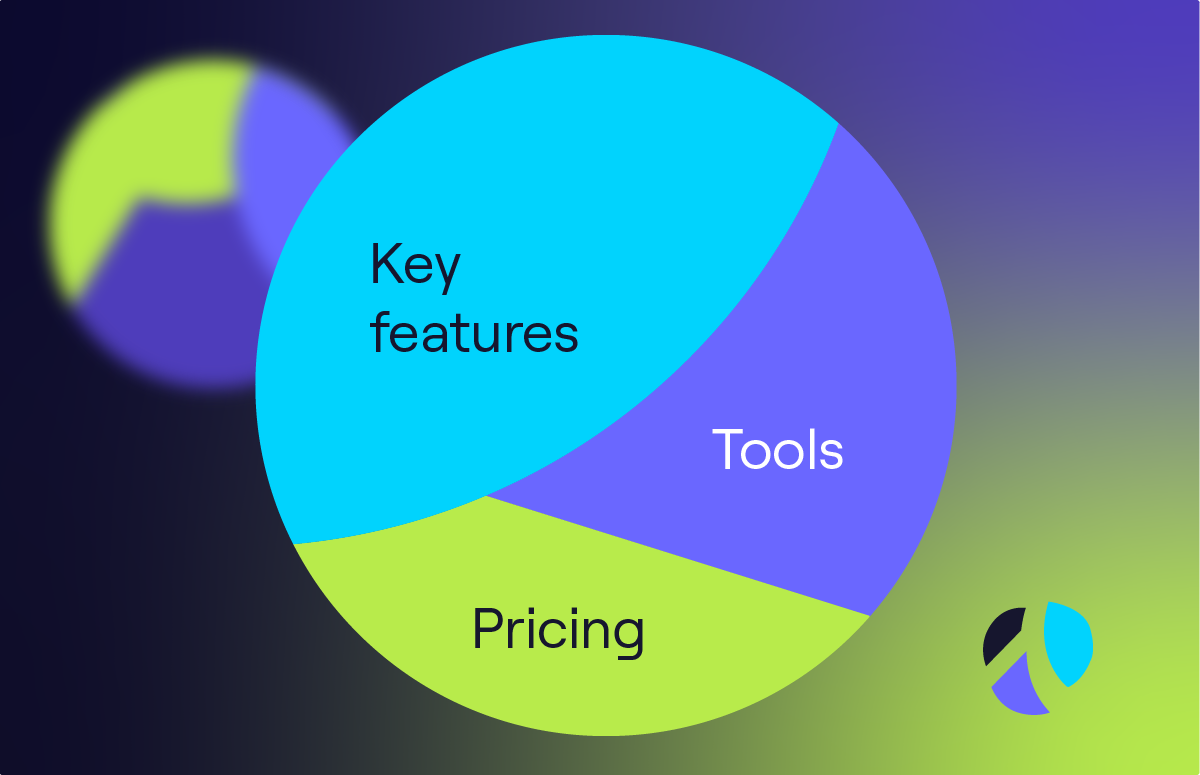How to Prioritise Sales Leads
Are you swimming in a sea of sales leads, wondering where to focus your efforts and time for maximum results?
For sales professionals and business owners, the real struggle lies not in getting leads but in defining which ones are worth your time and attention. In fact, 65% of businesses claim that generating traffic and leads is their biggest marketing challenge, according to HubSpot’s research.
That’s where effective sales lead prioritisation comes in. It’s a powerful strategy that can skyrocket your sales performance and propel your business to new heights.
In today’s article, we’ll uncover some steps to prioritise sales leads more effectively. Say goodbye to wasted efforts and time and hello to a more focused and fruitful sales journey.
Are you ready to take your sales lead management process to the next level?
Let’s go! 👇
What is lead prioritisation?
Lead prioritisation is the process of separating quality leads from unnecessary ones, so that you or your sales reps can reach out to the ones most likely to become your customers.
This way, your sales team can allocate its efforts, time, and resources more effectively, focusing on the most promising prospects and boosting the overall efficiency of the sales process.
Why is it important to prioritise sales leads?
The answer is simple. You want your sales team to succeed regardless of whether you’re an iOS app development company or a large eCommerce business. However, there are other reasons to prioritise sales leads.
It maximises limited time and resources
Not all leads are created equal, and dedicating the same amount of effort to every lead can be a waste of time and resources.
It improves your conversion rates
After using lead scoring models and lead segmentation techniques, you’ll find leads who demonstrated genuine interest, engagement or fit with your ideal customer profile.
This means that they’re more likely to convert. As a result, you have higher conversion rates and a stronger sales pipeline.
It means you can offer personalised sales experiences
When you segment leads based on their readiness to purchase or particular needs, you can adjust your sales approach to meet those needs and requirements.
As a result, you’ll have a more engaged customer base who trusts you. The more they trust you, the higher their chances of becoming paying and loyal customers.
It allows for better sales forecasting and planning
If you carefully analyse the characteristics and behaviours of prioritised leads, you can gain valuable insights into your sales pipeline.
This data helps you revise your sales strategies and make data-driven decisions.
How to prioritise sales leads in 6 simple steps
Now that you know what lead prioritisation is and why it’s important, it’s high time to learn how to prioritise sales leads more effectively.
Keep reading! 👇
1. Use a lead scoring system
Lead scoring is a process that ranks leads according to their characteristics, behaviours, and interactions with your business. It lets sales teams focus on the leads that are most likely to convert to paying customers.
Implementing a lead scoring system is an actionable way to understand how much of your time a lead is worth. It lets you prioritise prospects by quickly assessing if they’re worth reaching out to.
Lead scoring typically includes giving specific points to actions and characteristics of potential customers. This helps you objectively evaluate and prioritise prospects based on how closely they match your ideal customer profile and whether they’ve shown interest in your product.
2. Use the right technology
Nowadays, the right B2B technology can make a lot of difference when managing and prioritising sales leads. Advanced tools and platforms can streamline your lead management process, boosting efficiency and sales performance.
One of the greatest benefits of using technology in lead management is the ability to capture, organise, and centralise lead data. So, consider investing in a robust customer relationship management (CRM) system to store all relevant lead information in one place.
With a reliable CRM, you can track lead interactions, log communication history, and easily get valuable insights to inform your sales strategies.
In addition, automation tools can greatly improve your lead management endeavours. By automating repetitive tasks, such as entering data, scoring leads, and sending follow-up emails, you can save time and concentrate on more valuable activities.
Automated workflows can assist in nurturing leads by ensuring prompt and relevant communication; they help to prevent potential leads from being overlooked or forgotten.
Another crucial element in successful lead management is tracking and analysing leads. You can retrieve valuable information about lead behaviour, engagement trends, and conversion metrics using the best email analytics tools.
This sales data enables you to make informed decisions and refine your strategies for prioritising leads. By identifying the most effective channels, messaging, and points of contact, you can allocate your resources more efficiently and optimise your sales process.
Integration capabilities are also crucial when selecting the right technology for lead management. Use solutions that seamlessly integrate with other tools in your tech stack, such as marketing automation platforms or email marketing software.
This integration ensures smooth data flow across different systems, giving you a holistic view of your leads and streamlining your workflows.
Moreover, lead management has undergone a revolution with the advent of AI and ML technologies. These advanced tools enable you to analyse large volumes of data, identify patterns, and make accurate predictions.
AI-powered lead scoring models can assess lead quality and predict conversion probabilities, allowing you to prioritise leads based on their potential value. ML algorithms can also provide tailored recommendations for nurturing leads based on historical data and customer behaviour.
However, you must recognise that while technology can enhance lead management, it should complement human expertise rather than replace it. The human touch remains vital in building relationships, understanding customer needs, and delivering personalised experiences.
To make the most out of modern technology, you should train your workforce to use them effectively. You can achieve this by organising training sessions and mentoring programs. When running mentoring sessions, use mentoring software to streamline the mentoring process and maximise the benefits of technology-enabled learning.
3. Prioritise inbound leads first
The first leads to focus on are people who have visited your website and expressed interest by downloading a free resource or taking another action.
Why focus first on these leads?
They’ve made it clear that your product might be a useful solution for their business. So, make sure to follow up with those leads immediately. If you forget to do it on time, you will miss the chance to connect with them.
Among inbound leads are referrals and those who have reached out to you via social media platforms. Again, salespeople should reach out to these leads ASAP, as they are obviously interested in your business.
Apart from reaching out to inbound leads, it’s also essential to build a personalised approach before you get in touch with them. Taking into account their specific interests, pain points, and needs, your sales team can connect with them on a more personal level and provide relevant solutions.
To do so, analyse their interactions with your website and the pages they have accessed. For instance:
Suppose leads visit your blog section frequently and engage with articles about a particular topic. In that case, you can offer them additional resources, such as an eBook or a webinar, that help them learn more about it.
You can also leverage technology and automation to enhance the effectiveness of managing and prioritising inbound leads. Using a CRM system, for instance, can streamline lead management processes. This way, sales teams can efficiently track and prioritise their interactions, ensuring that no lead goes unnoticed.
Communication with inbound leads also matters. Regularly follow up with prospects, provide them with relevant information, address their questions, and nurture the relationship.
If you engage with your leads, you’ll build trust, establish credibility, and ensure that your product or service remains top of mind when they’re ready to buy.
4. Prioritise sales prospects who opened your emails second
Salespeople send countless emails to potential clients every day. Which of these prospects actually opens your messages?
Sales reps can check if prospects are opening their emails and whether they’re clicking on the links contained inside.
If they’ve opened an email, it means that the lead might consider your offer. It goes without saying that you should contact the buyer as soon as they open your email!
Use insights gained from email engagement to enhance your sales approach further and personalise your messaging. Luckily, many email tracking tools provide useful data to help you understand which parts of your emails resonate with leads and which might need improvement.
Besides, you can monitor which links the recipients click on; this info lets you learn what interests your prospects the most. Then you can tailor future messages accordingly.
When it comes to emails, A/B testing is also a must. It allows salespeople to understand which subject lines, content formats, or CTAs drive higher open rates and engagement.
Once you learn this information, you can optimise your email strategy over time and increase the effectiveness of your outreach efforts.
5. Prioritise prospects who visited your company’s website third
These leads are looking for more information about your product. They most likely need a guiding hand and assistance from a sales rep. When a prospect expresses significant interest by repeatedly returning to your website, your reps should prioritise that lead over those that haven’t.
How do you know which prospects are visiting your website? When a prospective customer views a webpage on your site, the CRM system logs this activity in the customer’s timeline.
Additionally, the system provides information on the frequency of revisits to the website and whether there are any shared connections between the sales representative and the prospect.
When contacting these potential customers, recognise their frequent interactions with your website and express gratitude for their interest. Refer to the specific materials they’ve engaged with, emphasising how it relates to their objectives or difficulties.
Discussing their website engagement can build strong connections with them, establish credibility, and foster trust.
6. Prioritise outbound leads that are great fits last
One often neglected approach is to work outbound leads.
Follow these steps to prioritise your outbound sales leads more effectively 👇
- Identify your ideal customer profile (ICP) by analyzing your current customer base. Find common characteristics like industry, company size, pain points, or buying behaviour. This will allow you to create a profile of your ideal customer, which can serve as a guide for prioritising leads.
- Assess each lead by comparing how closely they align with your ideal customer profile. Use a lead score or rating to measure their potential value. Consider factors like demographics, expressed interest, engagement level, and compatibility with your product or service. This scoring system enables you to rank and prioritise your leads objectively.
- Learn what stage of the buyer’s journey your lead is in. Leads at the bottom of the sales pipeline are closer to making a purchase decision and should receive immediate attention. These prospects are more likely to convert. On the other hand, leads who are in the early stages of the sales funnel may need additional nurturing before they are ready to buy.
- Evaluate the potential income or overall value that comes with each lead. Give more attention and allocate more resources to opportunities with higher value, as they can greatly influence your business’s overall profitability.
Prioritising sales leads: the last word
It isn’t enough to make a list of sales leads, as not all leads will convert. You also need to learn how to prioritise sales leads to focus your efforts and resources on those leads that are genuinely interested in your brand. So, don’t let a fantastic chance slip you by because your prioritisation method is poor.
Following the above six steps will lead to an increase in your sales close rate. They will allow your salespeople to qualify and prioritise their sales prospects efficiently.
The most important lesson is:
You must learn to allocate your efforts to prospects who are most likely to purchase rather than those who aren’t.



